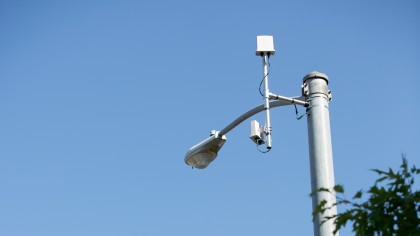The city that's ruled by self driving cars
A place where commuters can read books at the wheel
Shulman said GPS antenna placement inside different makes and models was a challenge. GPS location is one of the most important factors in a V2V test because it determines exactly where each car is located on the road. He said the GPS placement impacted the performance of the testing and that internal placement was "not viable" for the tests.
He says the real-time monitoring, which analyzes data such as the exact location of a vehicle in the lane and how many cars are in an intersection at one time, proved valuable.

Moving forward?
Thilo Koslowski, a Gartner auto analyst, says the Michigan test is proving to be a success: the DOT collected a mass of data that will help move V2V technology forward. At the same time, he says the Ann Arbor setting was a highly controlled environment in a confined area.
"
The first vehicles equipped with this technology will be pretty lonely because they won't have anyone to talk to. It will take another decade before we see some meaningful market penetration
."
"We will see V2V deployed in our vehicles and infrastructures, but it will require government support to do this because it is a chicken-and-egg challenge," he says.
Sign up for breaking news, reviews, opinion, top tech deals, and more.
"The first vehicles equipped with this technology will be pretty lonely because they won't have anyone to talk to. It will take another decade before we see some meaningful market penetration."
Most automakers agree this first test will be one of many required. There will have to be wider, focused tests and broader, over-arching tests. Still, with traffic fatalities are on the rise: in the US (the number reached 34,080 deaths, the highest since 2005) there is a strong push to make V2v a reality within the next decade -- or even less..
"By the end of the year, the NHTSA will announce their decision about going forward with developing a regulation mandating V2V technology on new vehicles," says Shulman. "Ford and other OEMs will work with the US DOT on [which] V2I apps will be prototyped, tested and standardized, and the infrastructure to support these applications will be deployed."
"A coordinated national deployment of vehicles and infrastructure would be the best. It is likely that DSRC-equipped infrastructure will grow along with the number of DSRC-equipped vehicles, similar to the way the number of hotspots grew with the number of devices that are Wi-Fi capable," Shulman continued, hinting at a "point release" mentality for safety upgrades.
Will this combination of sensor technology in the car and V2V communication work? That's what the DOT, automakers, the University of Michigan, and safety experts will debate into the next year and beyond. The good news: the future car is coming, one test vehicle at a time.
Get more Car Tech from TechRadar

John Brandon has covered gadgets and cars for the past 12 years having published over 12,000 articles and tested nearly 8,000 products. He's nothing if not prolific. Before starting his writing career, he led an Information Design practice at a large consumer electronics retailer in the US. His hobbies include deep sea exploration, complaining about the weather, and engineering a vast multiverse conspiracy.